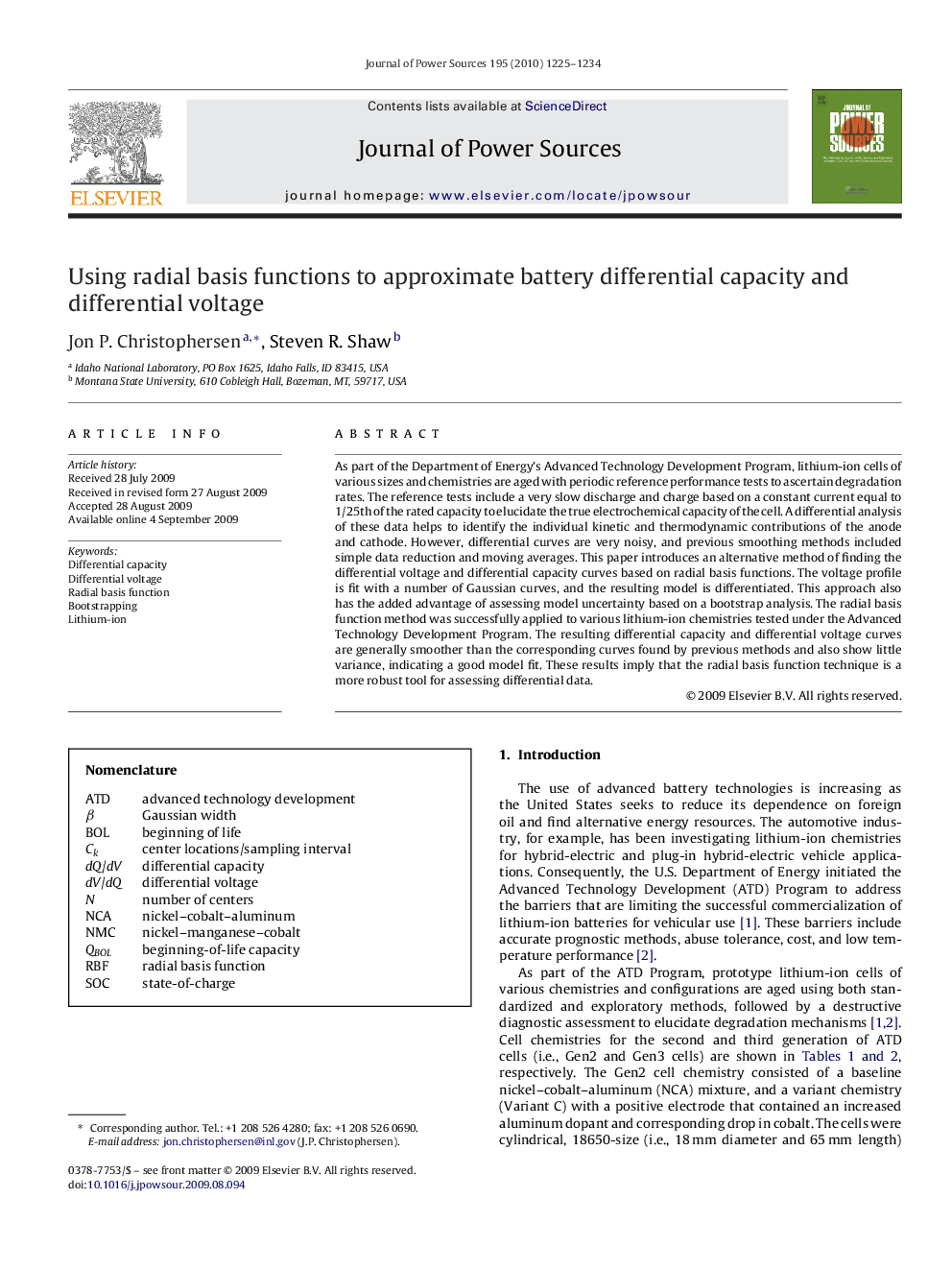| Article ID | Journal | Published Year | Pages | File Type |
|---|---|---|---|---|
| 1285126 | Journal of Power Sources | 2010 | 10 Pages |
As part of the Department of Energy's Advanced Technology Development Program, lithium-ion cells of various sizes and chemistries are aged with periodic reference performance tests to ascertain degradation rates. The reference tests include a very slow discharge and charge based on a constant current equal to 1/25th of the rated capacity to elucidate the true electrochemical capacity of the cell. A differential analysis of these data helps to identify the individual kinetic and thermodynamic contributions of the anode and cathode. However, differential curves are very noisy, and previous smoothing methods included simple data reduction and moving averages. This paper introduces an alternative method of finding the differential voltage and differential capacity curves based on radial basis functions. The voltage profile is fit with a number of Gaussian curves, and the resulting model is differentiated. This approach also has the added advantage of assessing model uncertainty based on a bootstrap analysis. The radial basis function method was successfully applied to various lithium-ion chemistries tested under the Advanced Technology Development Program. The resulting differential capacity and differential voltage curves are generally smoother than the corresponding curves found by previous methods and also show little variance, indicating a good model fit. These results imply that the radial basis function technique is a more robust tool for assessing differential data.
